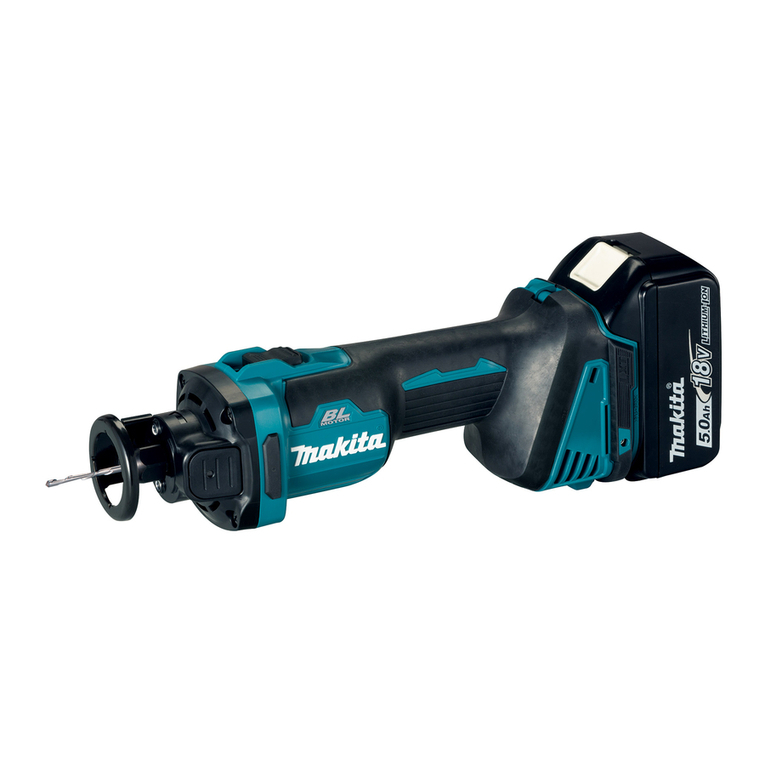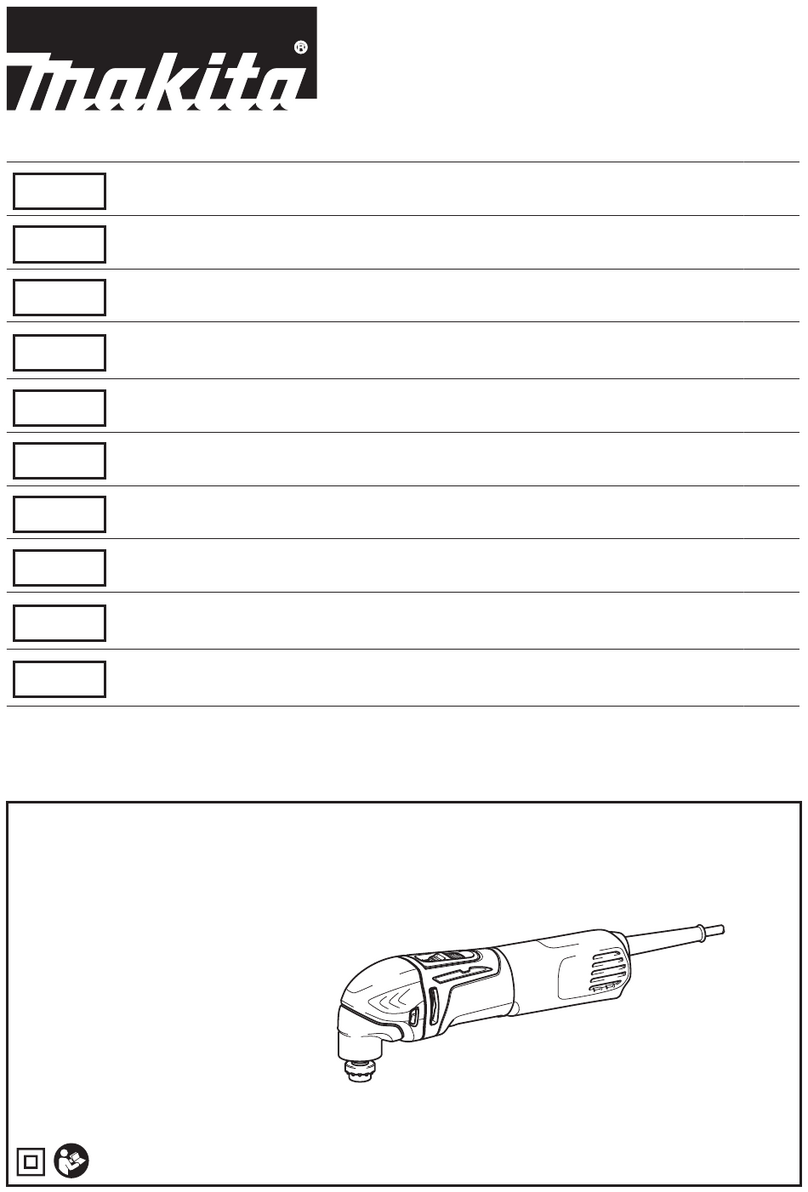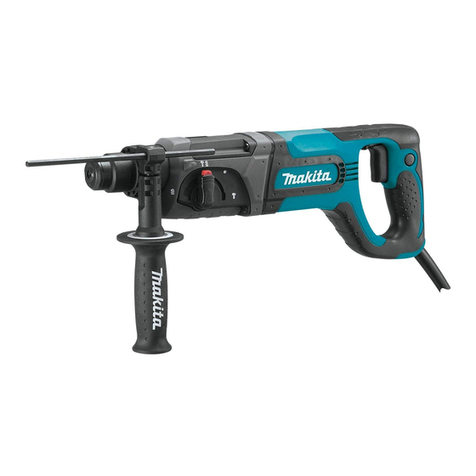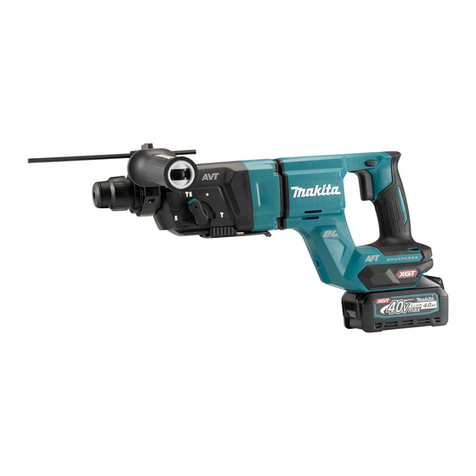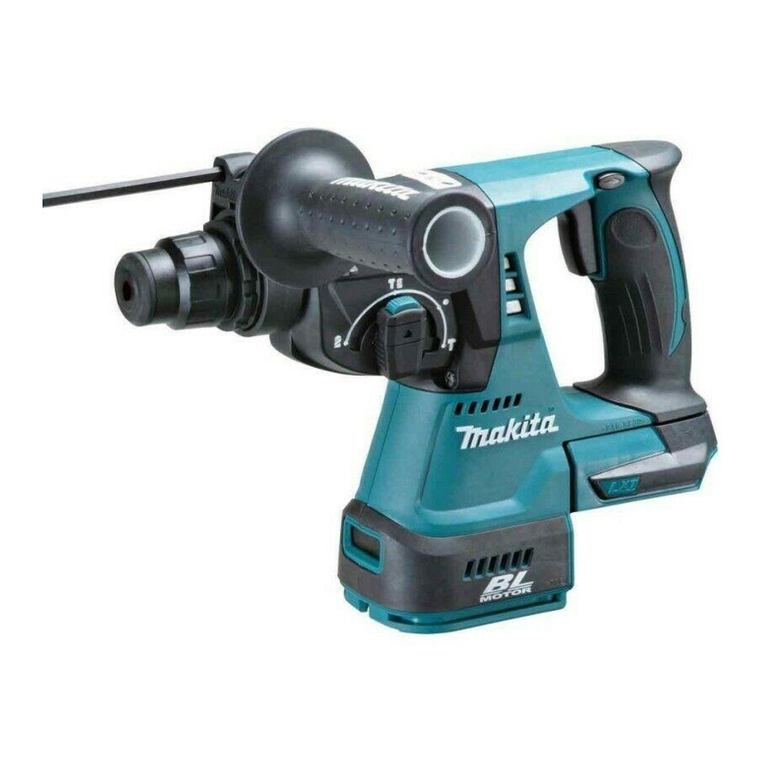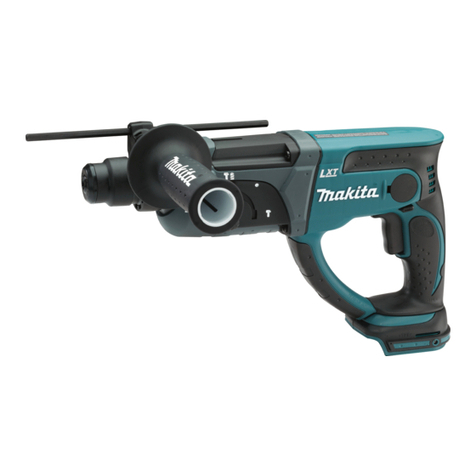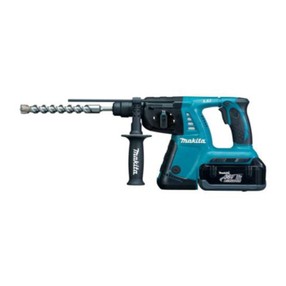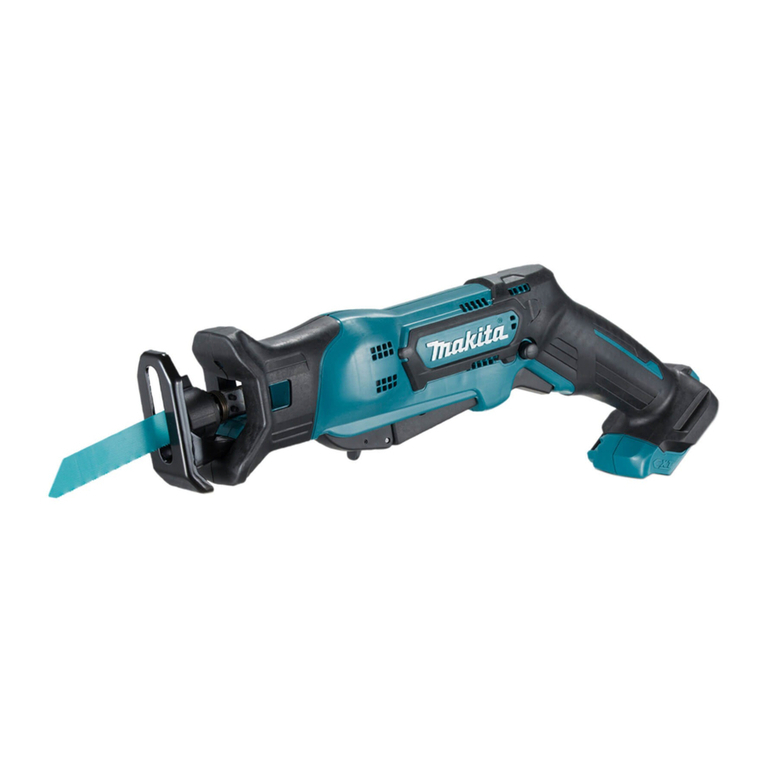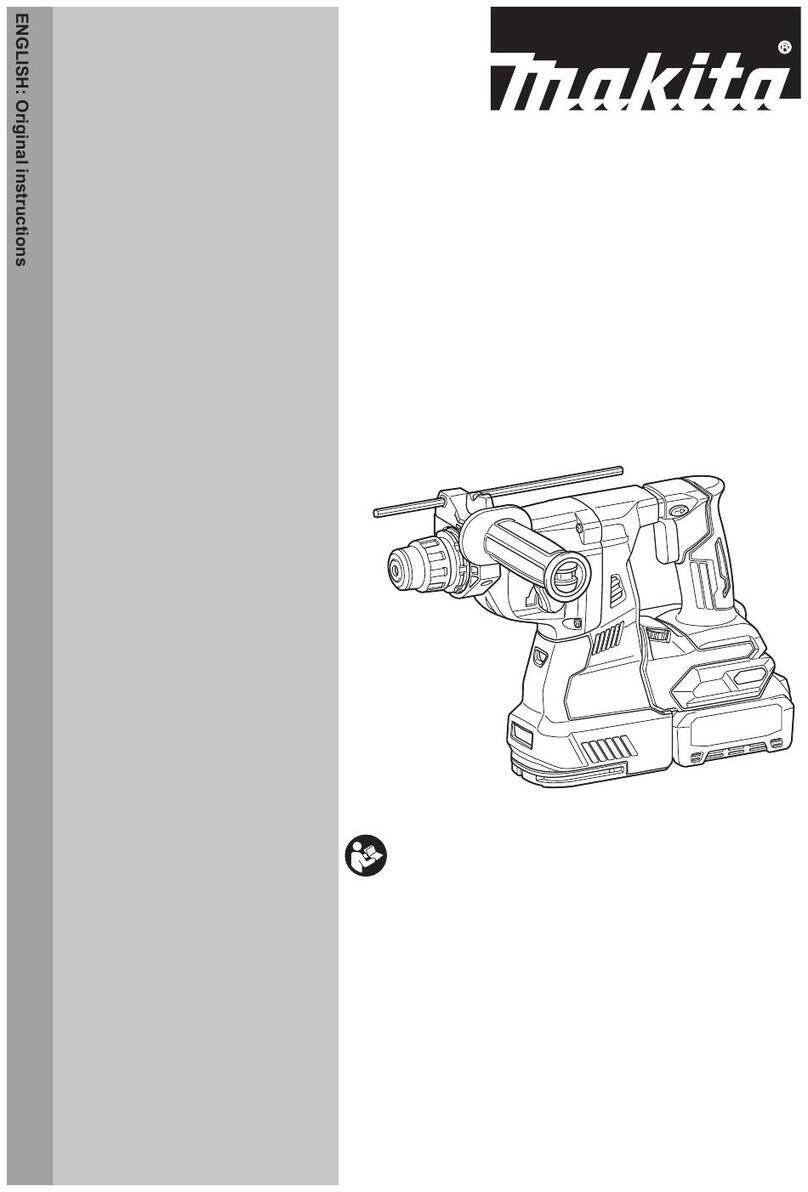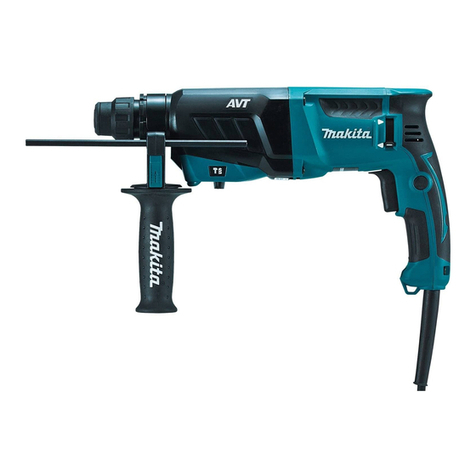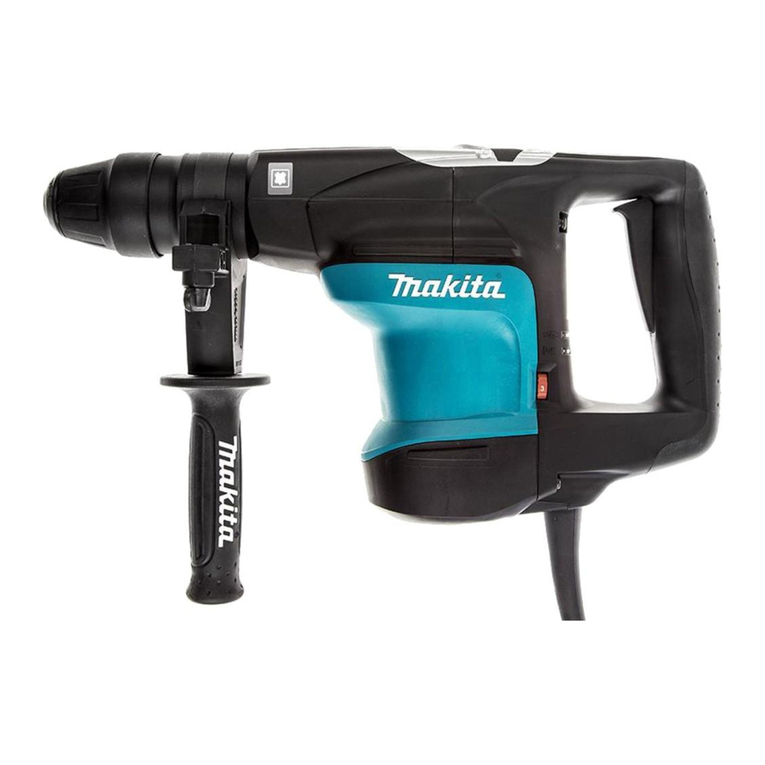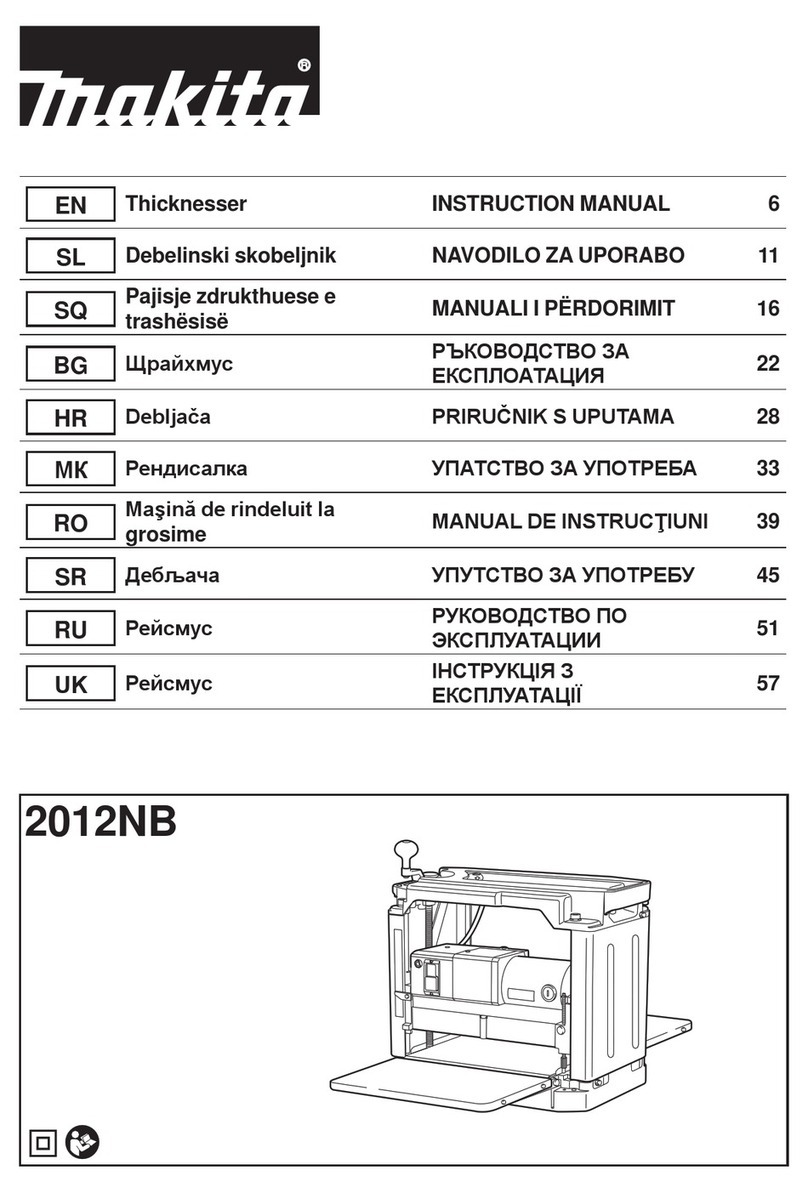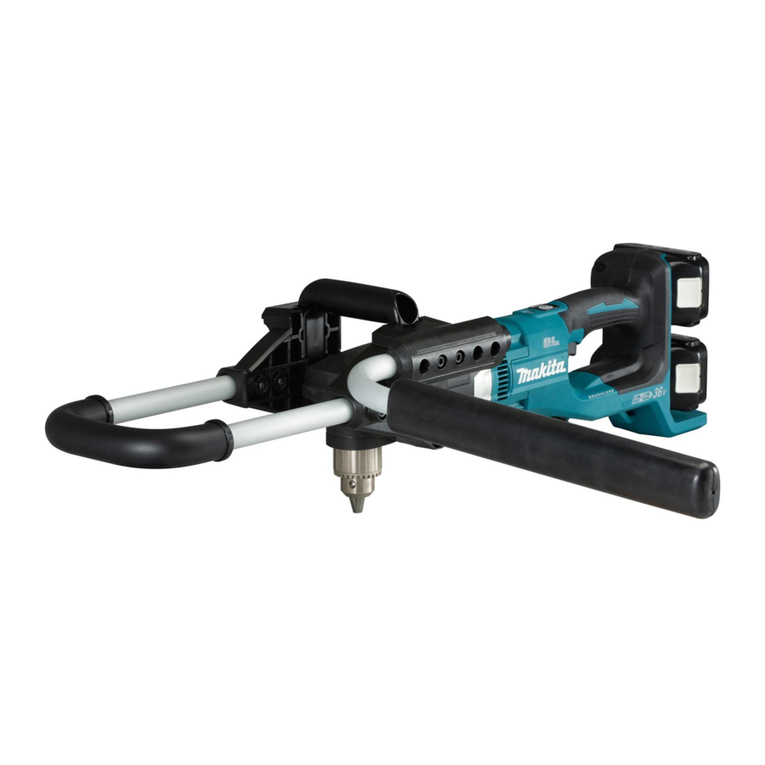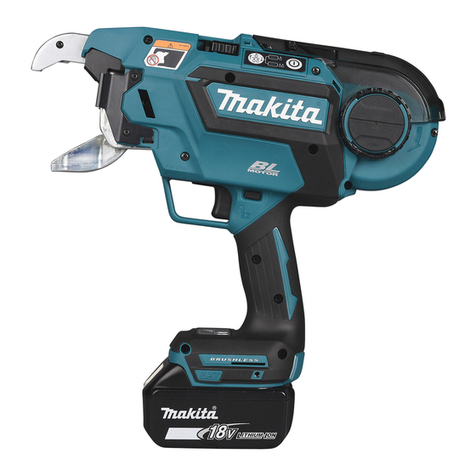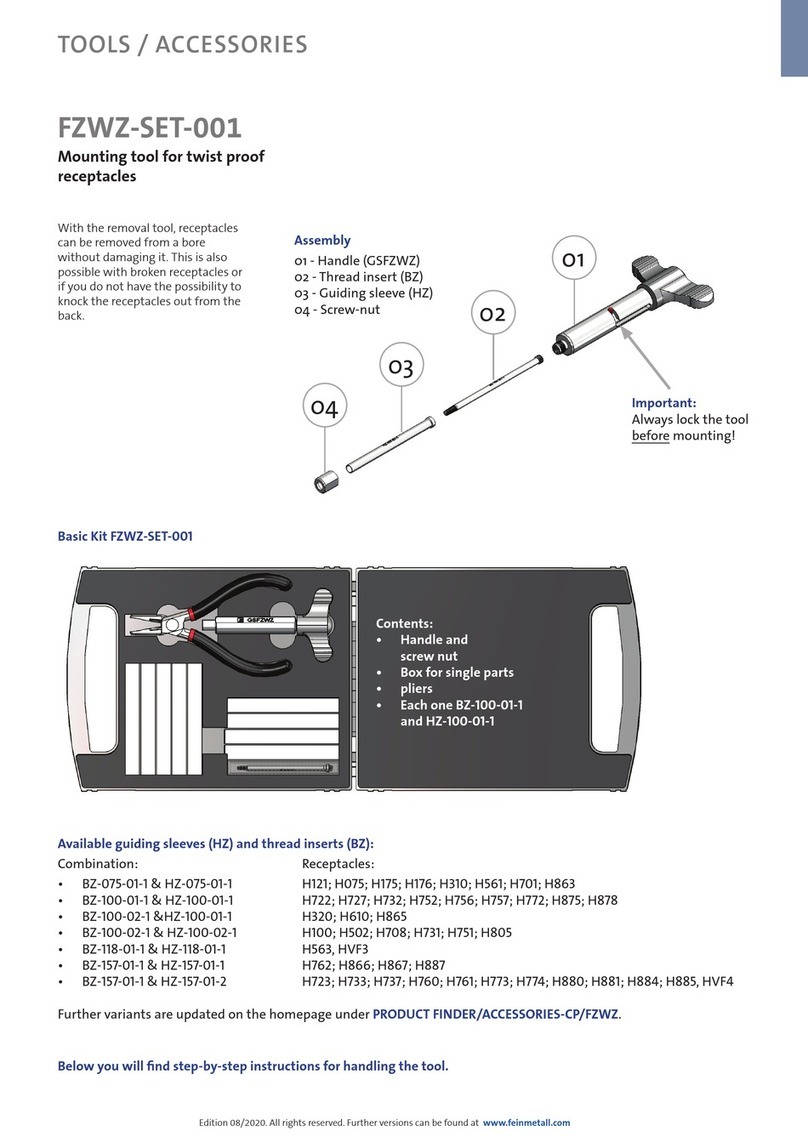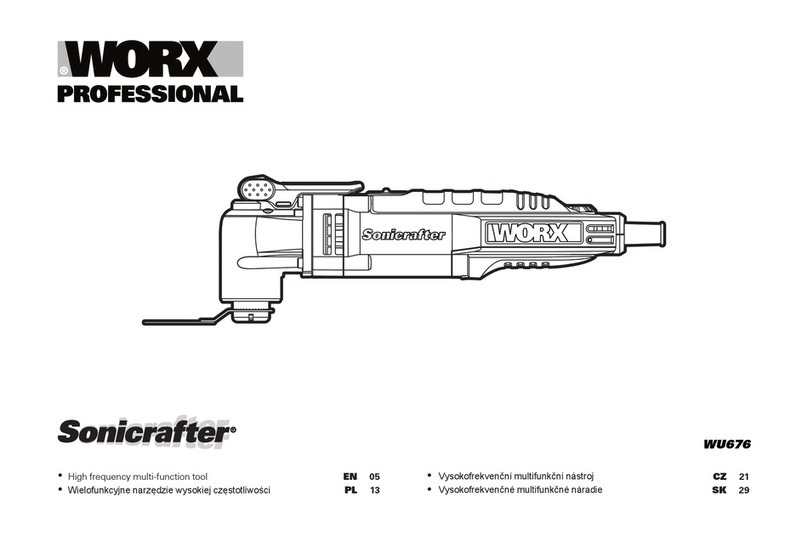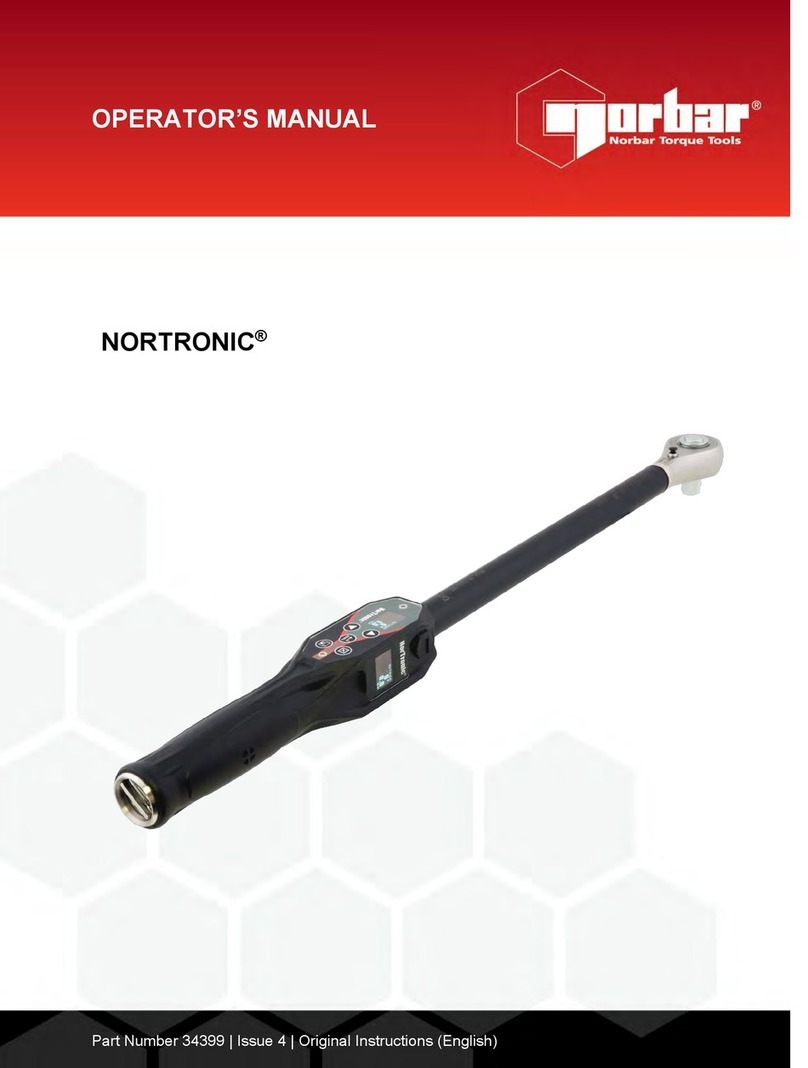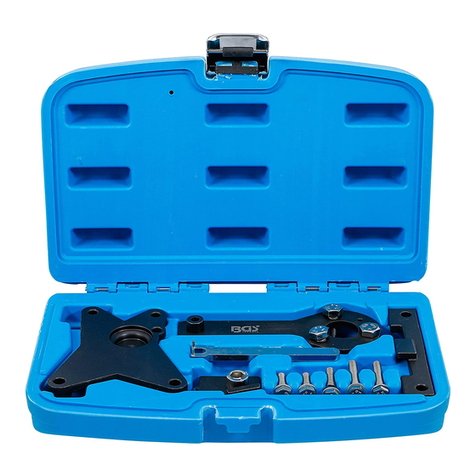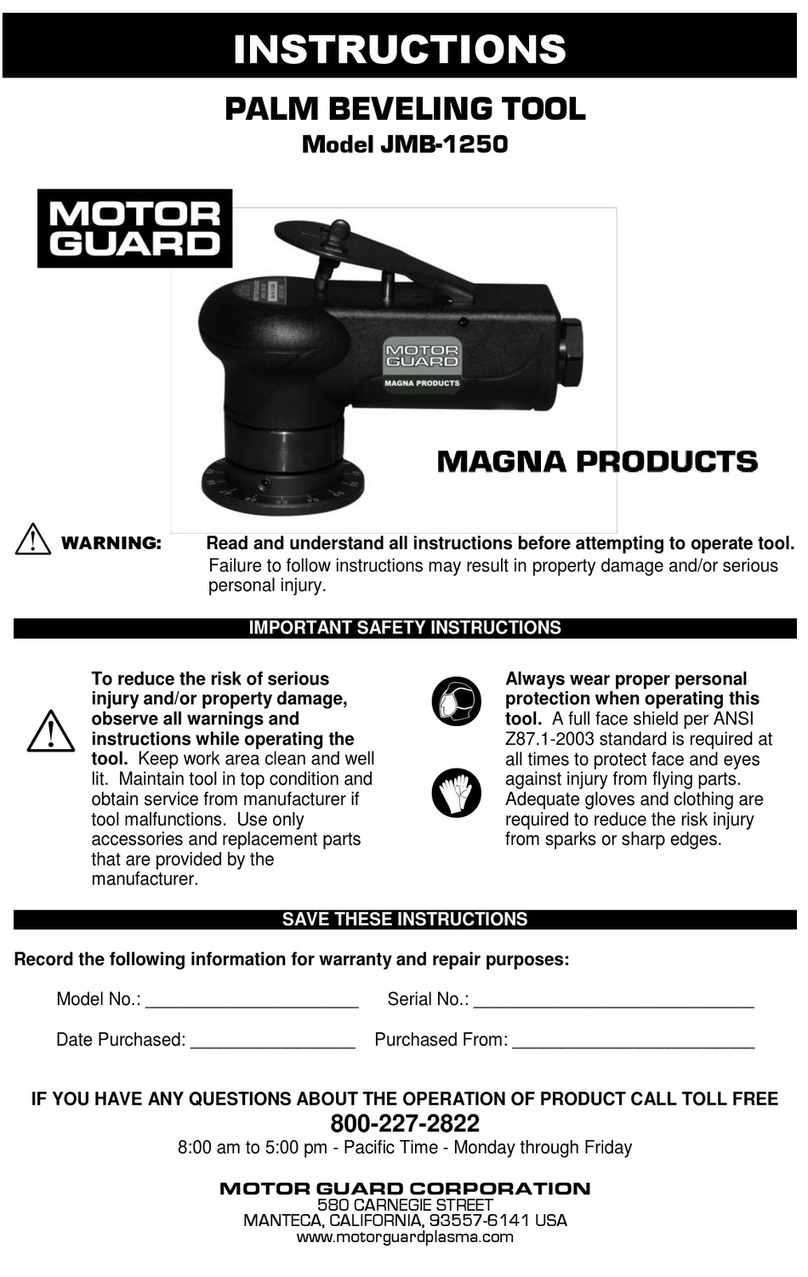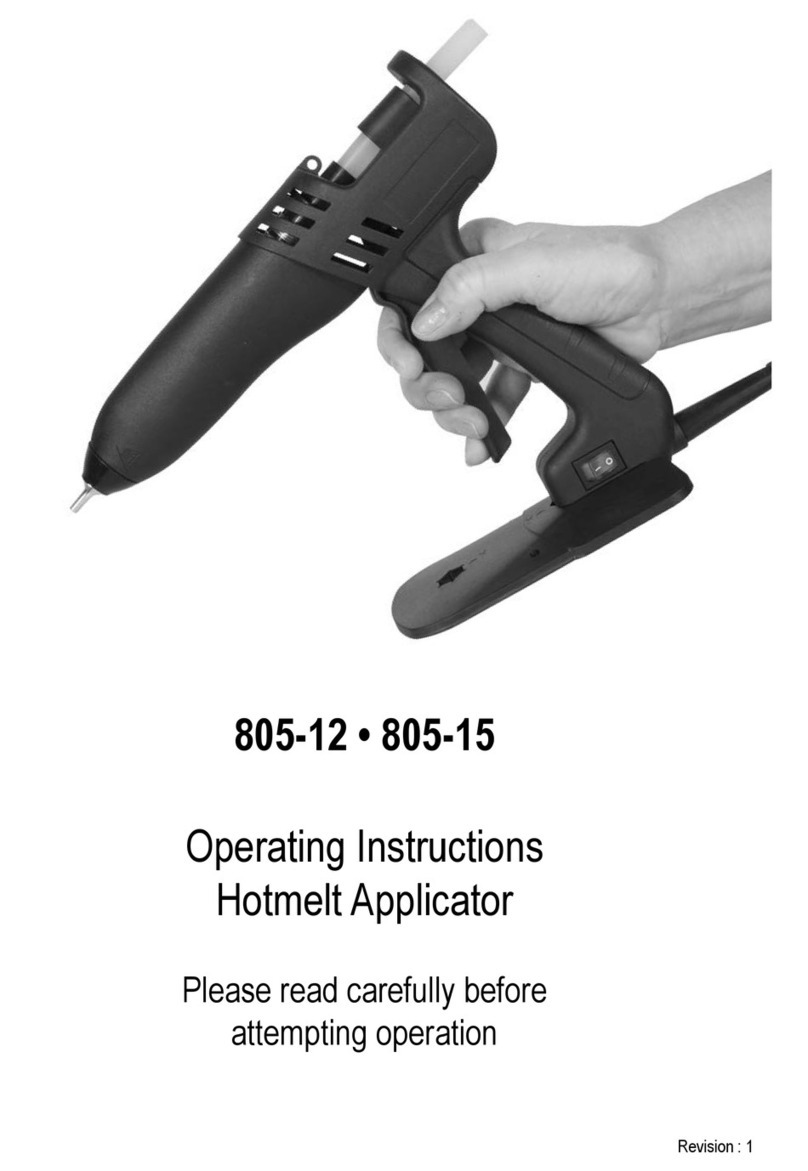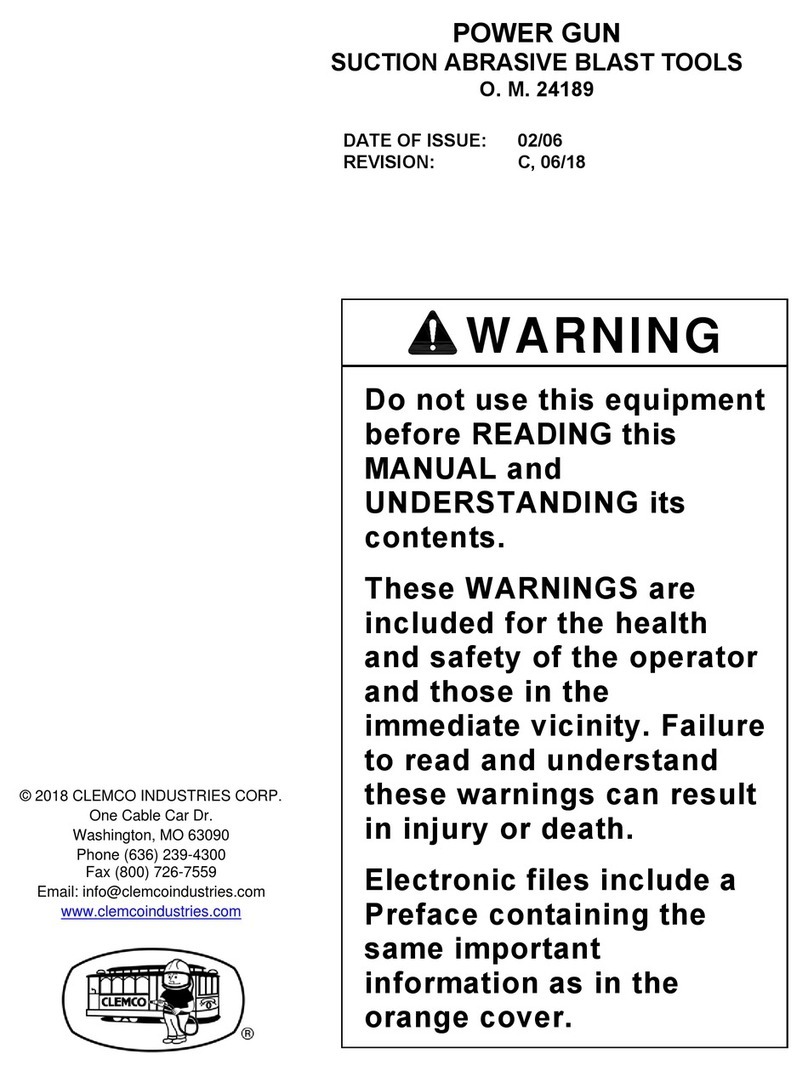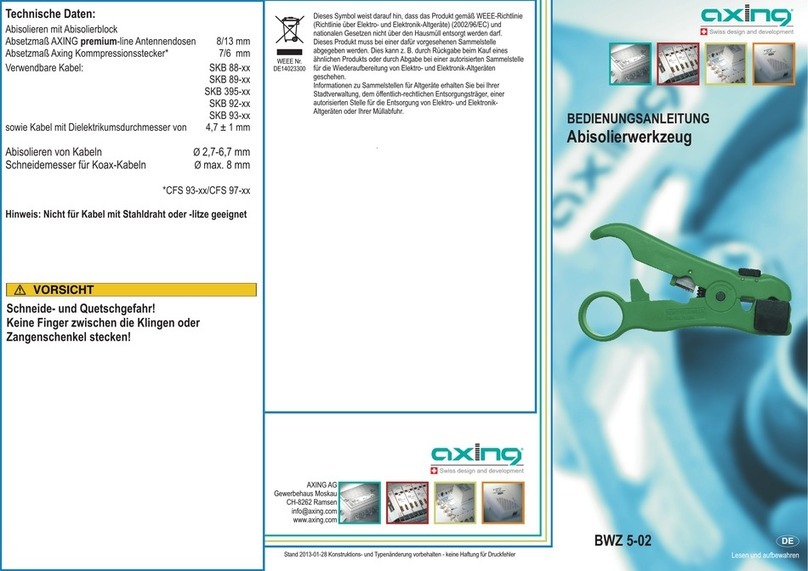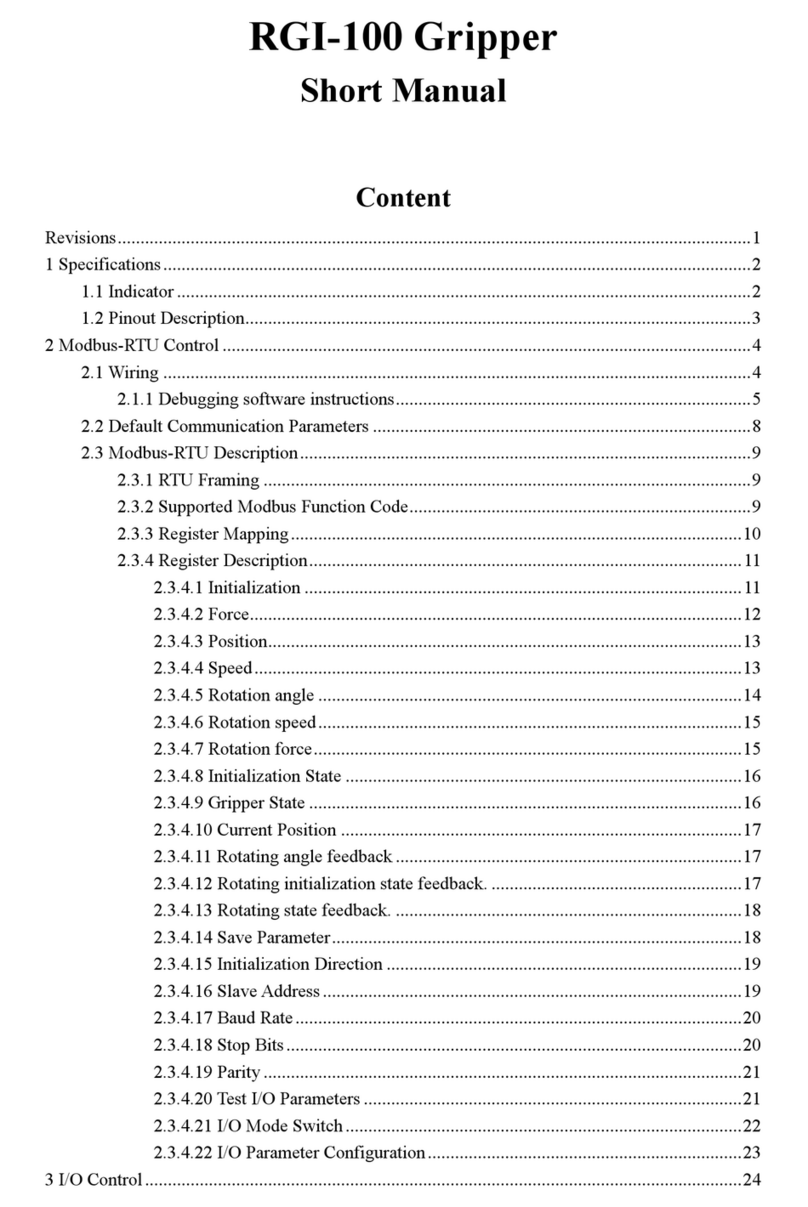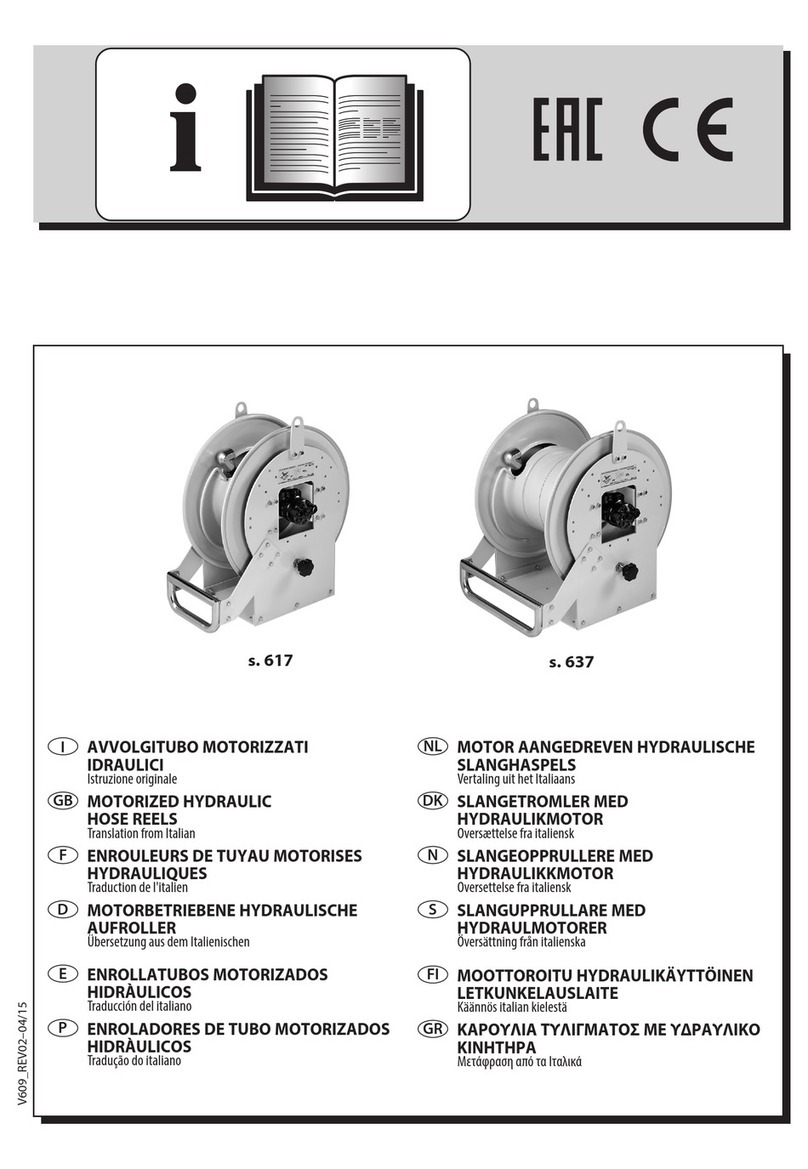
4
GEA0062
Failure to follow the warnings and instructions
may result in electric shock, fire and/or serious injury.
The term "power tool" in the warnings refers to your
mainsoperated (corded) power tool or batteryoperated
(cordless) power tool.
1. Cluttered or
dark areas invite accidents.
2.
Power tools
create sparks which may ignite the dust or fumes.
3.
Distractions can cause
you to lose control.
4.
Unmodified plugs and matching outlets will
reduce risk of electric shock.
5.
There is an increased risk of
electric shock if your body is earthed or grounded.
6.
Water entering a power tool will
increase the risk of electric shock.
7.
Damaged or entangled cords
increase the risk of electric shock.
8.
Use of
a cord suitable for outdoor use reduces the risk of
electric shock.
9.
Use of an
GFCI reduces the risk of electric shock.
10.
A moment of inattention while
operating power tools may result in serious
personal injury.
11.
Protective equipment such
as dust mask, nonskid safety shoes, hard hat, or
hearing protection used for appropriate conditions
will reduce personal injuries.
12.
Carrying power tools with
your finger on the switch or energising power tools
that have the switch on invites accidents.
13.
A wrench or a key left
attached to a rotating part of the power tool may
result in personal injury.
14.
This enables better control
of the power tool in unexpected situations.
15.
Loose clothes, jewellery or
long hair can be caught in moving parts.
16.
Use of dust
collection can reduce dustrelated hazards.
17.
The correct
power tool will do the job better and safer at the
rate for which it was designed.
18.
Any power tool that cannot
be controlled with the switch is dangerous and
must be repaired.
19.
Such
preventive safety measures reduce the risk of
starting the power tool accidentally.
20.
Power tools are
dangerous in the hands of untrained users.
21.
Many accidents
are caused by poorly maintained power tools.
